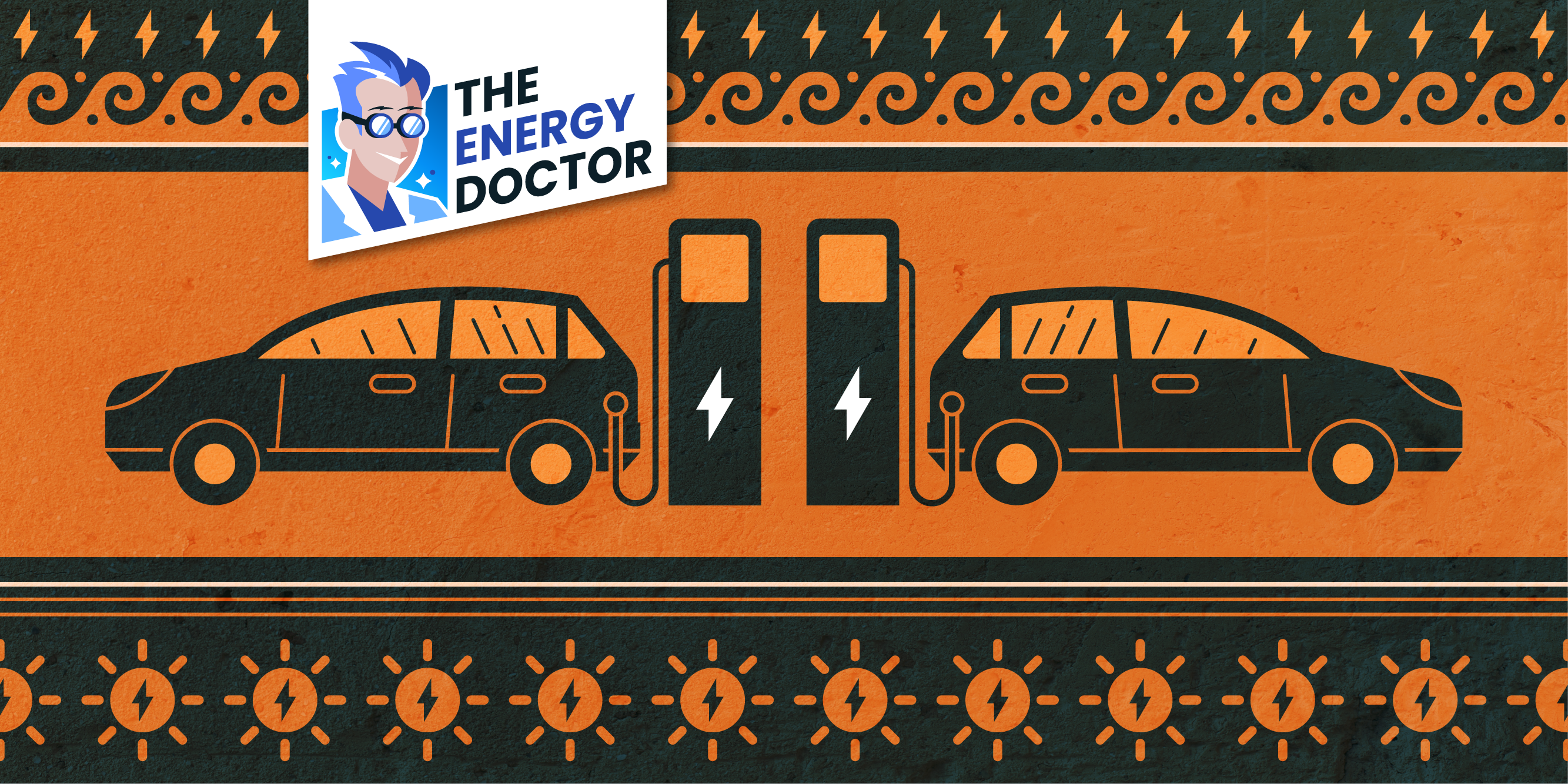Debunking EV Myths: The Truth About Electric Vehicles
Switching to an electric vehicle (EV) is one of the most impactful ways to reduce your household’s carbon footprint, alongside embracing other green technologies.
More and more drivers are adopting EVs for their green credentials, and to make significant savings on fuel - especially when used together with solar panels.
However, outdated misconceptions continue to surface and cloud the judgment of those thinking about making the swap.
So, when it comes to EVs, how do you know what’s fact and fiction? In this article, we’re busting the most common electric vehicle myths to inform your decision.
Wasted energy makes up 30% of the average energy bill - do something about it! Get more from your smart meter with Loop.
Myth #1: Electric Vehicles Have Limited Range
One prevalent misconception surrounding electric vehicles revolves around their perceived limited range, which supposedly renders them unsuitable for long-distance travel. If the fear of running out of power is deterring you from switching to an EV, rest assured, you're not alone. According to a poll conducted by Loop, 17% of respondents cited this as their main concern.
However, modern EVs boast vastly better battery technology compared to older models, enabling them to cover hundreds of miles on a single charge. Many now offer ranges that either match or surpass those of traditional internal combustion-engined (ICE) vehicles.
If range anxiety remains a prominent worry for you, it's worth considering the typical length of your journeys. For most people, everyday trips tend to be short and can easily be accommodated with at-home charging.
For longer excursions, you’ll need to plan where the charging stops are along your route. Fortunately, the EV charging infrastructure in the UK is rapidly expanding, with over 52,000 charging points spread across 30,000 locations, ensuring greater accessibility and convenience.
Myth #2: The Electric Vehicle Charging Network is Limited
Many people believe that charging an electric vehicle is inconvenient and time-consuming. In a Loop poll, 22% cited the charging network as their main concern. However, the process has become increasingly simple thanks to the quick expansion of public charging infrastructure and the widespread availability of home charging stations.
The majority of EV owners opt to charge their vehicles overnight at home. However, an increasing number of rapid charging stations for quick top-ups while on the go, make long-distance travel more feasible.
Charging stations are categorised into four power ratings: slow (3-6kW), fast (7-22kW), rapid (25-99kW), and ultra-rapid (100kW+). The latter two categories are accessible at 5,000 locations across the UK, boasting a total of 10,000 charging points. These faster chargers are typically found at service stations, enabling compatible vehicles to achieve a full charge in less than an hour.

Myth #3: Electric Vehicles Increase Your Energy Bills
If you’ve been researching how an EV could work for you, you’ve probably come across a concern that they can considerably increase your electricity bills. While it's true that charging an EV consumes a lot of electricity and will therefore add to your bill, the cost savings in fuel and maintenance more than compensate for the increase in energy consumption.
Many energy providers have 'EV tariffs' or time-of-use tariffs where energy is cheaper at off-peak times of the day. This means you can reduce your charging bill, up to half in some cases, by charging at cheaper times.
Myth #4: Electric Vehicles are Expensive
In a recent Loop poll, almost 60% said that the buying cost was the main reason putting them off.
While a brand-new EV can be a big upfront investment, it’s important to remember that not all electric vehicles cost premium prices. There are a wide range of EVs available at different price levels. The second-hand market for EVs is also increasing, allowing even more households to swap to greener transport.
Beyond the initial cost, there’s also a common misconception that EVs are costly to maintain. However, they have fewer moving parts than ICE vehicles, reducing the need for regular maintenance and repairs. With no oil changes, spark plug replacements, or transmission fluid checks required, the long-term maintenance costs are often lower than ICE vehicles.
There are also several government grants for EV buyers and owners. Flat owners and renters can also claim up to £350 off the cost of installing a socket with the government’s EV home charging grant.

Myth #5: Electric Vehicles are Bad for the Environment
Certain critics argue that electric vehicles aren't genuinely environmentally friendly. It's long been asserted that 'cradle to grave', EVs are worse particularly due to the battery manufacturing process. However, a new report has shown that even if they are more emissions-heavy initially, compared to traditional cars, in-life the balance shifts.
Their reliance on electricity, a variable proportion of which is still generated from non-renewable sources on the grid, is another environmental concern. While it's accurate that the footprint of EVs hinges on the electricity source, research demonstrates that even when powered by electricity from fossil fuels, electric vehicles have lower emissions than ICE vehicles. Moreover, as the National Grid transitions toward greater dependence on renewable energy sources, the environmental benefits of EVs will further increase.
Adopting sustainable lifestyle changes, like switching to an EV, can have a more substantial environmental influence as it sets an example for others to follow. By taking the initiative to make the transition, your eco-friendly decisions can inspire those around you to embrace positive changes of their own.
• • •
Cut your energy bill with Loop
Loop is a FREE energy-saving app that links to your smart meter, analyses your energy use and shows you easy ways to save. On average, Loop users cut their electricity use by 16% and their gas use by 10%! How much could you save?








